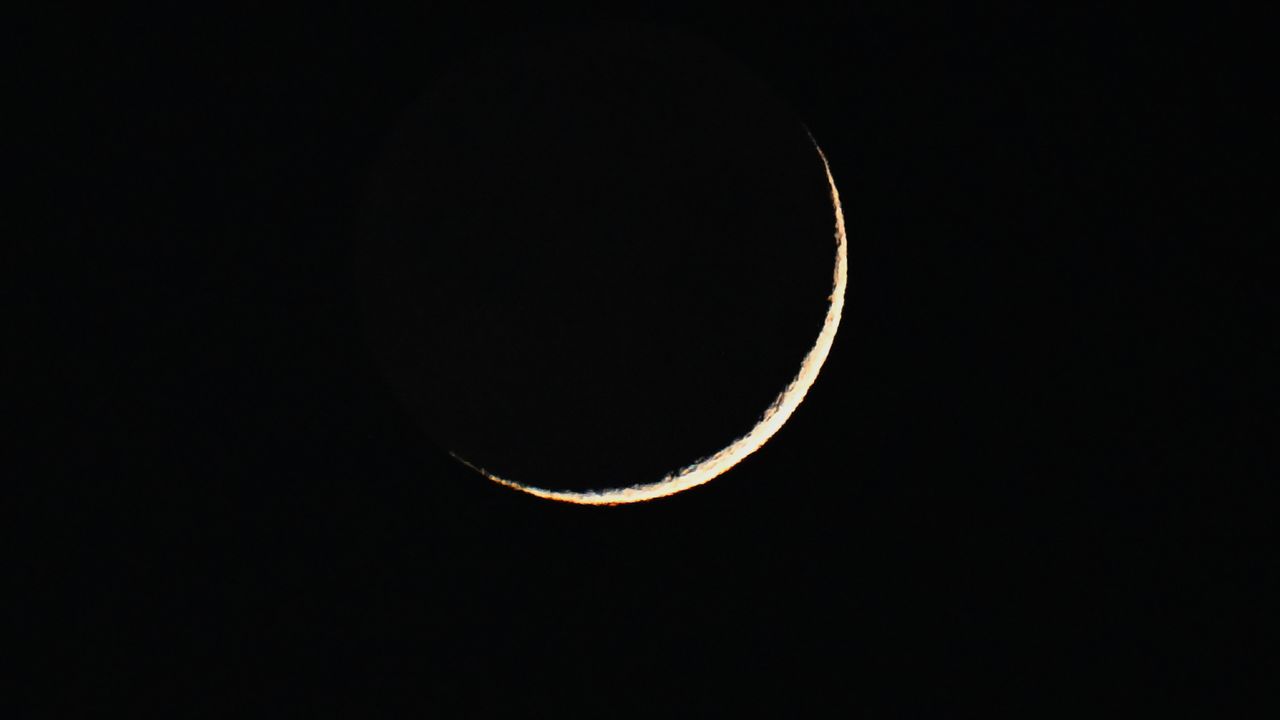Science
Witness the Waxing Crescent Moon Near Regulus Tonight

Stargazers will have a unique opportunity to observe the slender waxing crescent moon in close proximity to the bright star Regulus on the evening of July 26, 2023. This celestial event will take place in the constellation Leo, providing an appealing sight for those positioned with clear views of the western horizon.
As sunset approaches, look towards the west to locate the crescent moon, which will hover less than 10 degrees above the horizon. Regulus, often referred to as the ‘Kingly’ star, will appear as a striking blue-white point of light approximately 1 degree to the lower right of the moon’s edge. The star becomes increasingly visible as the sun descends further, creating an enchanting backdrop for evening observers.
For those unfamiliar with estimating distances in the night sky, a simple method involves extending the arm. The width of the tip of the little finger measures about 1 degree, while a clenched fist spans approximately 10 degrees. Observers may find the moon’s illuminated disk, which will only be about 7% visible, challenging to spot against the twilight sky. Both the moon and Regulus will set together a little over an hour after sunset.
Onlookers may also notice a gentle glow illuminating the moon’s night side, a phenomenon known as Earthshine or the ‘Da Vinci Glow’. This effect is particularly prominent around the new moon phase, as sunlight reflects off Earth’s surface and atmosphere, casting a soft light on the moon. This illumination reveals features of the lunar surface, such as ancient lava plains.
As the evening progresses, the moon and Regulus will fit comfortably within the view of 10×50 binoculars, enhancing the experience for those interested in celestial observation.
By the following evening, July 27, the moon will have shifted away from Regulus along the ecliptic path—the trajectory traced by the moon, sun, and planets across the sky. Stargazers can anticipate the moon’s close passage to Mars early next week, making for another exciting observation opportunity.
For those keen on exploring the wonders of the night sky, guides on the best telescopes and binoculars for viewing celestial bodies are widely available. Photographers interested in capturing these moments are encouraged to look into recommended cameras and lenses tailored for astrophotography.
In addition, if you manage to photograph the moon alongside Regulus, consider sharing your images with fellow enthusiasts. Send your photos, along with your name and location, to [email protected] to join the community of sky watchers.
This evening’s celestial display promises to be a memorable experience, merging the beauty of the cosmos with the thrill of observation.
-

 Lifestyle3 months ago
Lifestyle3 months agoLibraries Challenge Rising E-Book Costs Amid Growing Demand
-

 Sports3 months ago
Sports3 months agoTyreek Hill Responds to Tua Tagovailoa’s Comments on Team Dynamics
-

 Sports3 months ago
Sports3 months agoLiverpool Secures Agreement to Sign Young Striker Will Wright
-

 Lifestyle3 months ago
Lifestyle3 months agoSave Your Split Tomatoes: Expert Tips for Gardeners
-

 Lifestyle3 months ago
Lifestyle3 months agoPrincess Beatrice’s Daughter Athena Joins Siblings at London Parade
-

 World3 months ago
World3 months agoWinter Storms Lash New South Wales with Snow, Flood Risks
-

 Science3 months ago
Science3 months agoTrump Administration Moves to Repeal Key Climate Regulation
-

 Science2 months ago
Science2 months agoSan Francisco Hosts Unique Contest to Identify “Performative Males”
-

 Business3 months ago
Business3 months agoSoFi Technologies Shares Slip 2% Following Insider Stock Sale
-

 Science3 months ago
Science3 months agoNew Tool Reveals Link Between Horse Coat Condition and Parasites
-

 Sports3 months ago
Sports3 months agoElon Musk Sculpture Travels From Utah to Yosemite National Park
-

 Science3 months ago
Science3 months agoNew Study Confirms Humans Transported Stonehenge Bluestones









